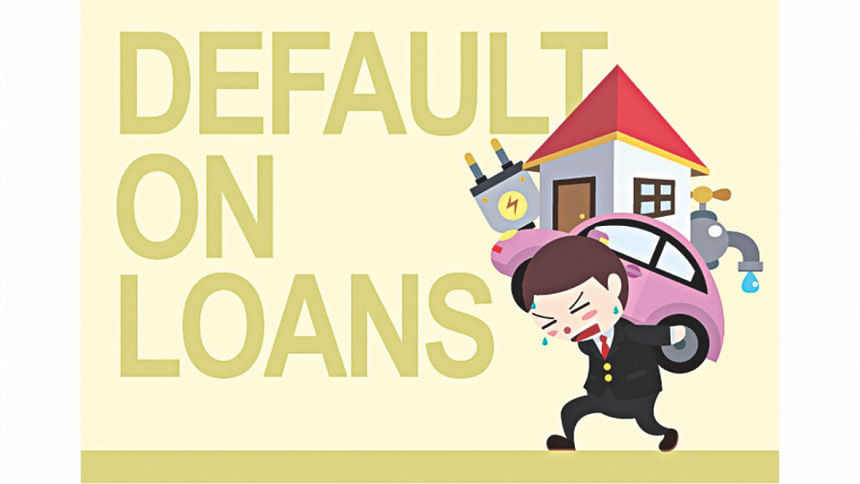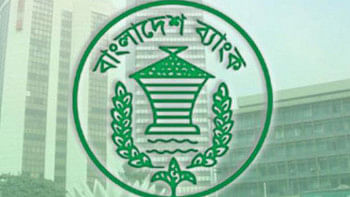Shifting the paradigm of loan defaulter's liability

This is a crucial time in Bangladesh to find out the ways to reduce the default loan in the banking system, in a scenario where the amount of default loan is above 99 thousand crore taka only in 2018. All the stakeholders including the new Government of Bangladesh are searching ways to reduce this default loan. In this writing, I am trying to find out the way of reducing default loans through shifting the paradigm of liability of the defaulter from civil to criminal liability.
Legally and ideologically, the loan defaulter of bank carries civil liability and when he defaults to repay the loan amount, it is his civil liability to pay the money. Even if the defaulter fails to pay the loan amount, the Court may sanction civil imprisonment of 6 months. The Money Loan Court Act 2003 is designed in such a way that the liability of any kind of loan defaulter is civil liability. For example, if any one defaults to pay loan of one lac taka, he carries the civil liability and the recovery process carries two stages. Firstly the Court will try to recover the default amount by selling the mortgaged property or attached property through the said process of auction under section 33 of Money Loan Court Act, 2003 and after the process, if the default loan is not recovered, the Money Loan Court may sentence the defaulter of 6 month civil imprisonment. On the other hand, the liability of the million-dollar defaulter is also civil liability and the recovery process is same as the defaulter of one lac take.
For example, when one borrower defaults to pay loan, in accordance with Money Loan Court Act, 2003, the Court will first try to sell the mortgaged property or attached property to adjust the loan following the process as mentioned in section 33 of the Act. After that, if the loan is not recovered, the Court may sentence him 6-month civil imprisonment, even though the amount of the default loan is million dollars. From the axis of this legal point, certain phenomenon should be focused. Firstly, both the liability of one lac and the liability of one million dollar is civil liability. Secondly, the recovery process of these two cases is same under Money Loan Court Act, 2003. Thirdly, in both the case of default, the Court may sanction 6-month civil imprisonment. So, from this paradigm, no one can repudiate this disproportionate scenario of both defaulters, whatever may be the default amount. Under this Act, innocent defaulter of minimum amount and willful defaulter of million dollar will have to go through the same threshold test and recovery process, which ultimately inspires those money ransackers to steal money from the bank.
To my thinking, it would be rational to fix up the liability based on the proportionality and classify the borrowers (based on default loan amount, their intention and activities). Moreover, to date, the present instances of forgery over bank, also instigates me to argue for shifting the paradigm of liability. At present, there are many instances of involving forgery on documents of banks and using this forgery, those so-called big borrowers take large amount of money from bank. For example, in hallmark case, through collaboration with bank officials, forging the documents, Hallmark in the name of L/C transaction between two fictitious company robbed above thousand crore taka. Now, there are many cases filed before the Money Loan Court for recovery of that amount.
Moreover, there are also many instances at present, where some so called willful defaulters forge those L/C acceptances and present in another bank and accordingly disburse huge amount of money in the name of business transaction. To date, in Bangladesh some scams like Crescent scam over Janata Bank, Bismillah Group scam open our eyes towards their criminal liability. It is true that for such criminal activities, some criminal cases are filed before the criminal courts in Bangladesh. But when for the recovery of the default loan, Bank files suit in Money Loan Court, the liability becomes totally civil liability and the recovery process is as I mentioned earlier, whose highest punitive action is 6-month civil imprisonment under section 34 of Money Loan Court Act, 2003.
The newly formed government in Bangladesh shows its commitment to recover almost 99 lac crore default amount. Now if we allow the liability of these money robbers as civil liability in Money Loan Court, the recovery of money becomes really difficult for the bank. But, if we repudiate criminal liability of those big fishes, recover of willful defaulters will never be smooth and ultimately this disproportionate legal treatment can not change the scenario of default culture. So, if we really want to address their liability, the paradigm of liability of willful defaulter from civil to criminal liability should be changed so that those million dollar willful defaulter can be addressed under legal diagram of Money Loan Court.
The writer studied LLM in International Commercial Law, University of Glasgow.

 For all latest news, follow The Daily Star's Google News channel.
For all latest news, follow The Daily Star's Google News channel. 



Comments